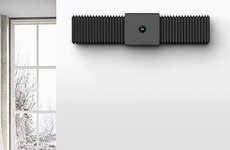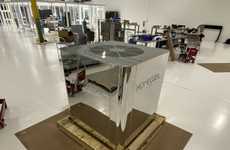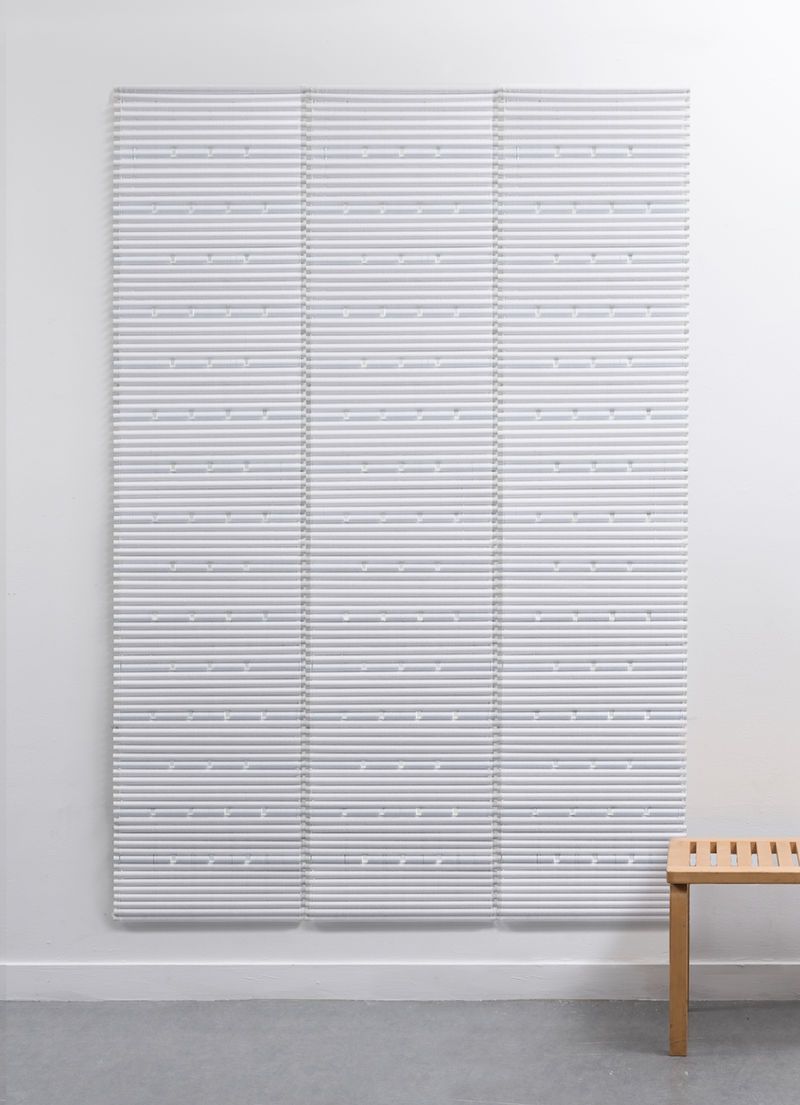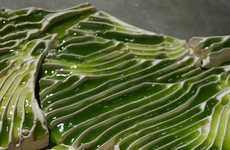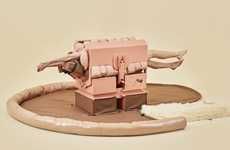
The Woven Air-Conditioner by Maxime Louis-Courcier Absorbs Heat
Laura McQuarrie — October 11, 2019 — Eco
References: maximelouis & fastcompany
Industrial designer Maxime Louis-Courcier's passive air conditioner shows that there's plenty of room for home appliances to become more sustainable and potentially even made with more natural materials. The low-tech woven air-conditioner boasts a portable design that can be set against a wall to naturally reduce the temperature of a room.
Thre removable covering absorbs heat, naturally making a room more comfortable, using phase-change materials (PCMs) which go from transparent to blue as the amount of heat stored within the unit increases. The system has the potential to be a useful addition to homes in the summer and thanks to its design that's not only functional and decorative but also easy to store away during other months of the year.
Thre removable covering absorbs heat, naturally making a room more comfortable, using phase-change materials (PCMs) which go from transparent to blue as the amount of heat stored within the unit increases. The system has the potential to be a useful addition to homes in the summer and thanks to its design that's not only functional and decorative but also easy to store away during other months of the year.
Trend Themes
1. Passive Cooling - The trend towards eco-friendly and energy efficient cooling solutions opens opportunities for designers to create aesthetic and innovative passive air conditioners.
2. Smart Materials - The use of phase-change materials (PCMs) in passive air conditioners is a disruptive innovation opportunity for materials scientists to develop PCMs with higher heat storage capacity and better durability.
3. Portable Designs - The demand for smaller and portable air conditioners creates opportunities for designers to create movable and aesthetically pleasing solutions for homeowners.
Industry Implications
1. Home Appliances - The growing demand for sustainable and energy efficient cooling solutions opens opportunities for manufacturers to develop passive air conditioners for homes and offices.
2. Textiles - The use of woven materials in passive air conditioners presents a disruptive innovation opportunity for textile manufacturers to develop fabrics with better heat absorption capabilities.
3. Construction - Sustainable passive air conditioners can be integrated into the design and construction of buildings as an innovative solution to reduce energy consumption and emissions.
6.1
Score
Popularity
Activity
Freshness


